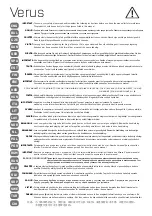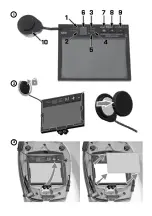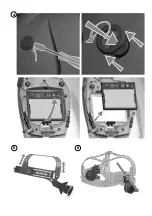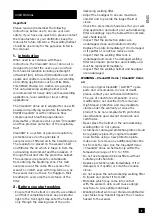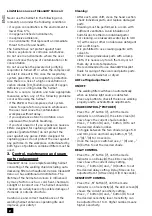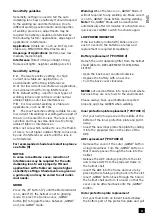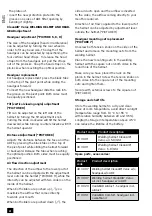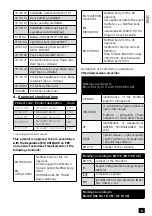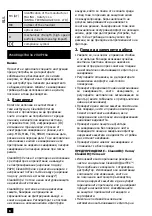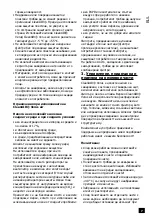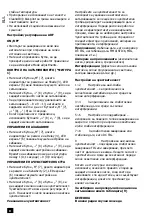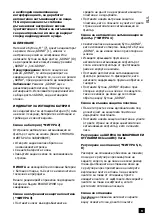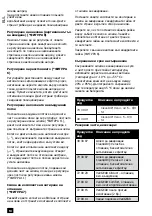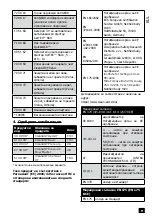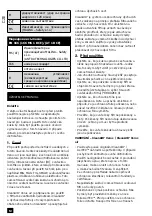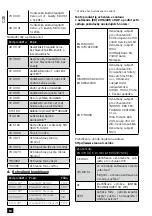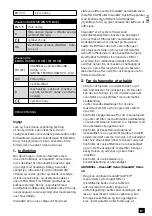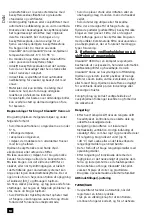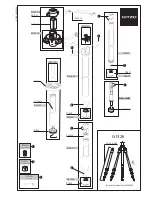
3
Sensitivity guideline
Sensitivity settings is used to tell the auto
darkening lens how sensitively it should respond
to the welding arc and interferences. Due to
different working environments and properties
of welding processes, adjustments may be
required. Sensitivity should be determined by
the following factors: applications, amperage of
applications, interference:
Applications
(Stable arc, such as DC TIG, non-
stable arc, MMA/STICK, MIG, Plasma etc.)
Amperage of Applications
(Extreme low, low-
medium, medium-high)
Interference
(Direct strong sunlight, strong
fluorescent lights, neighbor welding arc etc.)
Sensitivity settings
1~2
The least sensitive setting - for high
current non-stable arc applications, in
environments with strong interferences.
3~4
For low current non-stable arc applications,
in environments with strong interferences.
5~6
Default setting - used for most types of
welding, indoors and outdoors under normal
ambient lights and/or low interferences
7~8
For low current welding or stable arc
applications, such as DC TIG.
9
The most sensitive setting-suitable for very
low current TIG welding or welding where part of
the arc is obscured from view. The lens is very
sensitive and may become dark due to strong
ambient lights or interferences.
When not sure which number to use, the thumb
of rule is to set higher number firstly, reduce one
by one if interferences exists until the lens is
not interfered.
For recommended shade level selection please
see table (9)
NOTICE
In some rare extreme cases, reduction of
interferences may be required for the auto
darkening lens to work properly. TIG and
applications with stabler arc require higher
sensitivity settings. Shade levels are given as
a guide only and may be varied to suit indivi-
dual needs.
GRIND
Press the „M“ button (7), until the Mode indicator
is on „Grind“ (1), the helmet is set to grinding
mode. Or, press the Quick access „GRIND“
button (10) to toggle the lens between „GRIND“
and „non-GRIND“ mode.
Warning:
When the lens is on „GRIND“ Mode, it
will not respond to any welding arc. Make sure it
is not in „GRIND“ mode before starting welding.
Note:
The „GRIND“ Mode will be deactivated
automatically after 30 minutes of activation. Use
quick access GRIND switch to activate again.
LOW POWER INDICATOR
If the low battery indicator(5) blinks once in
each 3 seconds, the batteries are low and
replacement is required immediately.
Battery replacement (*PICTURE 2)
Detach the auto−darkening filter from the helmet
shield (Refer to REPLACEMENT OF WELDING
FILTER).
• Open the back cover counterclockwise.
• Replace the battery with a new one.
• Turn the back cover clockwise.
NEVER
put used batteries into house hold waste
because they are very toxic to the environment.
Please always have used batteries recycled
properly and stay GREEN when welding.
Inner protection plate replacement (*PICTURE 3)
• Put your nail into a groove in the middle of the
bottom of the inner protection plate and pull it
away.
• Insert the new inner protection plate by sliding
it into the prepared rails on the sides of the
ADF.
ADF replacement (*PICTURE 4)
• Remove the cover of the outer „GRIND“ button
using screwdriver. Turn the „GRIND“ button so
that it easily passes through the hole into the
helmet.
• Release the ADF retaing spring from the slot
and remove ADF from the prepared frame in
the helmet shell.
• insert the ADF into the frame and secure by
pressing the retaining spring back into the slot.
• Insert „GRIND“ button back through the hole in
the helmet shell and turn it around so that the
cover can be attached back onto the „GRIND“
button.
Outer protection plate replacement
• Put your thumb into an indent located below
the bottom part of the protection plate and pull
ENG



